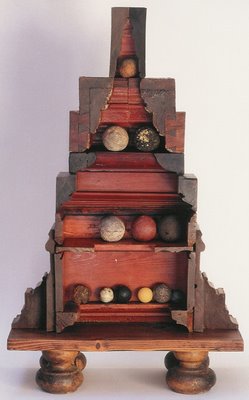 Our latest short film on the photographic works of Johann Dieter Wassmann, Portfolio de México, has just been released on YouTube. In recent years, Wassmann’s photographic oeuvre has been over-shadowed by his better-known early modernist assemblage works, seen most recently at the Melbourne International Arts Festival. We’re hoping the release of three short films now, and more to come, will allow his wide-ranging achievements to receive their just due.
Our latest short film on the photographic works of Johann Dieter Wassmann, Portfolio de México, has just been released on YouTube. In recent years, Wassmann’s photographic oeuvre has been over-shadowed by his better-known early modernist assemblage works, seen most recently at the Melbourne International Arts Festival. We’re hoping the release of three short films now, and more to come, will allow his wide-ranging achievements to receive their just due. In the spring of 1897, the University of Leipzig lecturer, sewerage engineer and artist traveled to Mexico City and Havana to advise authorities on the prevention and control of infectious disease. Wassmann’s pioneering work in the field was long recognized in the Americas, having acted as consulting engineer on Washington, D.C.’s waste management system during Reconstruction. The essential nature of his profession allowed Wassmann exceptional access to the lane-ways and by-ways of both cities, thus providing fodder for his photographic studies. On his return to Leipzig, Wassmann successfully processed over 100 glass-plate and nearly 200 roll-film negatives, although few of these images were printed during his life-time. Nine months later, he died from complications caused by a tram accident.
Quoting here from Wassmann Foundation director, Jeffrey D. Wassmann, "It was Johann Dieter Wassmann’s disillusionment with the industrial progress of the 19th century that led to his private forays into assemblage and photography. In 1881, he set out to combine his father's vocation -- carpentry -- with objects and images he collected for their innate, but often enigmatic qualities, creating boxed works that trace his speculations on an unsettling new world.
“This body of work built on the tradition of German wunderkammern and 17th century Dutch perspective boxes to draw the viewer into the mind of a most ubiquitous thinker.
"Throughout the 1890s, Wassmann continued to expand the visual vocabulary of his assemblage works, but he also began to experiment with photography, using both a bulky glass-plate view camera, as well as several of the newly developed hand-held roll-film cameras. Over an eight-year period he documented the landscapes, streetscapes, architecture and interiors of eastern Germany, in a style that extended beyond the topographic traditions of the day."
"The photographic works of Johann Dieter Wassmann provide the missing link between the meticulous, but still largely prescriptive street imagery of mid-19th century photographer Charles Marville, and the lyrical melancholy of Eugene Atget in the early 20th century. As a predecessor to his fellow countrymen Heinrich Zille and August Sander, Johann discreetly anticipated what vast potential the photographic arts held for the modernist era."








